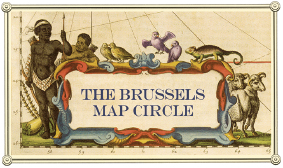Modern World Maps by Cahill, Harrison, and Fuller
(online) Miami, USA
Matthew H. Edney will discuss how 20th-century modernism gave rise to many paradoxes and antagonisms, among them a repeated challenge to the "scientific" map.
Modernism promoted the expectation that maps are properly scientific works that contribute to the continual remaking of modern, progressive civilization. This ethos perpetuated a conception of the world that was already dominated by Gerardus Mercator's famous map projection. Yet, the modernist impulse to reshape all aspects of human life led some people to challenge that map, and its excessive poleward distortions, through the application of new design to ensure effective communication. Mercator's projection had been perfect for the 19th-century era of maritime empires; now, a different view was needed for the new age of global connectivity promised by the airplane.
The challenge was taken up by three architects. Trained to creatively design functional spaces, each remapped the world as a series of interconnected landmasses rather than as continents separated by oceans. Bernard Cahill reconstructed the world though his Butterfly Projection (1909). Working for Fortune magazine, Richard Edes Harrison used a circular world map (1936), whose construction he explained by means of a twirling ballerina. And, R. Buckminster Fuller adapted his "dymaxion" construct, nicknamed the Bucky Ball, to make a geometrically angular world (1943).
The manner in which these three architects self-consciously rejected the time-honored designs of geographers and cartographers indicates how the idea of "map" and its supposedly scientific nature has long been contested. Their challenge was not as dramatic as that of the Cubist and Situationist reconfigurations of space, because the architects continued to refer to the depiction of geographical space now enhanced by their creative aesthetic. In other words, the three architects require a much more relaxed attitude to the nature of maps and cartography than modernism otherwise seems to promote.
The program will be followed by an audience question and answer session.
